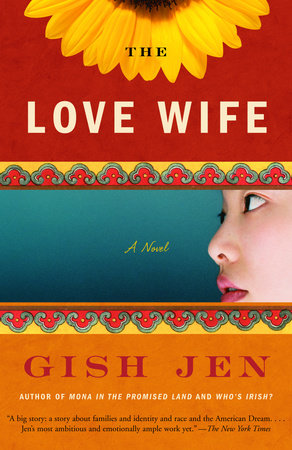Mixed-race Migration and Adoption in Gish Jen’s The Love WifePosted in Articles, Asian Diaspora, Literary/Artistic Criticism, Media Archive on 2015-04-03 20:39Z by Steven |
Mixed-race Migration and Adoption in Gish Jen’s The Love Wife
Canadian Review of Comparative Literature / Revue Canadienne de Littérature Comparée
Volume 42, Issue 1, Mars 2015
pages 45-56
Jenny Wen-chuan Chu
National Kaohsiung Normal University, Taiwan
Migration is a way of geographic movement. It involves a sense of belonging, nostalgia and diaspora issues. Besides, adoption in the migrated family illustrates the fluidity and tenacity of racial boundaries in different national and racial origins. In Gish Jen’s The Love Wife, the question of Mama Wong’s motives haunts Blondie and Carnegie. Is Lan a nanny who teaches their two Asian daughters to be more Chinese, or is she a love wife who drives Blondie out? In contemporary America, an interracial marriage like Carnegie and Blondie’s is increasingly common. We might expect Carnegie to naturally speak Chinese and know his culture, but it is Blondie who speaks Chinese and instructs their adopted children on Asian heritage. It is not natural. However, when Carnegie discovers that he is adopted, and adoption is a natural occurrence in China, he finally realizes that nothing is unnatural. His home is based on mutual love and sharing multiple cultures, not blood or skin colour.
In the dimension of mixed-race migration, home is a discourse of locality, and place of feelings and rootedness. According to Henri Lefebvre, home belongs to a differential space, i.e., a spiritual and imaginary space. Our memories and souls are closely related to such differential space. Gaston Bachelard, too, argues that our home is a privileged entity of the intimate values that we take it as our differential space: “Our [home] is our corner of the world” (4). Home is no longer fixed, but fluid and mobile. Nostalgia is inevitable. But loving homes provide more stability than do memories of good old days. In the dimension of mixed-race adoption, the American dream is internalized as the way of the mixed-race family’s lifestyle. In America, Chinese culture is also highly strengthened in the diversity of Chinese American families. However, how can the second generation of Chinese immigrants enjoy their individual American dreams, but still have to cope with the demands and expectations of their familial Chinese parents?
In The Love Wife, we observe that the adopted children perceive and negotiate their ethnic/racial identities and sense of esteem as well as their acceptance and ease with such an adopted status. Wendy and Lizzy are both Asian Americans. Blondie, who has a WASP background, has always been at the mercy of Carnegie’s Chinese mother, the imperious Mama Wong. When Mama Wong dies, her will requires a “relative” of hers from China to stay with the family. The new arrival is Lan, middle-aged but still attractive. She is Carnegie’s mainland Chinese “relative,” a tough, surprisingly lovely survivor of the Cultural Revolution. Blondie is convinced that Mama Wong is sending Carnegie a new wife, Lan, from the grave. Nevertheless, through identifying the sweet home with multiple cultures, Carnegie and Blondie’s mixed-race family opens the room for the practices of migration and adoption.
The author, Gish Jen, is a second generation Chinese-American. Her parents emigrated from China in the 1940s, her mother from Shanghai and her father from Yixing. She grew up in Queens, New York, moved to Yonkers, and then settled in Scarsdale. Different from those prominent Chinese-American writers who look back at Chinese-American history for their subject matter and focus on the conflicts between Chinese parents and American children, such as Amy Tan, Maxine Hong Kingston, etc., Jen is developing her distinctive voice. She aims at full participation in American life and reveals in her writings a strong desire to be a real American. The Love Wife, her third novel, portrays an Asian-American family with interracial parents, a biological son, and adopted daughters as “the new American family.” Jen turns to the story of transnational adoption, addressing that kinship plays a crucial role in an interracial family.
Jen’s The Love Wife has been discussed critically in several articles. Fu-jen Chen and Su-lin Yu’s paper explores the imaginary binary relationship between Blondie and Lan, as well as Žižek’s “parallax gap,” through the gaze of the (m)Other in The Love Wife. It argues:
The polarized differences between Blondie and Lan are sustained on the grounds of a safe distance at which they…
